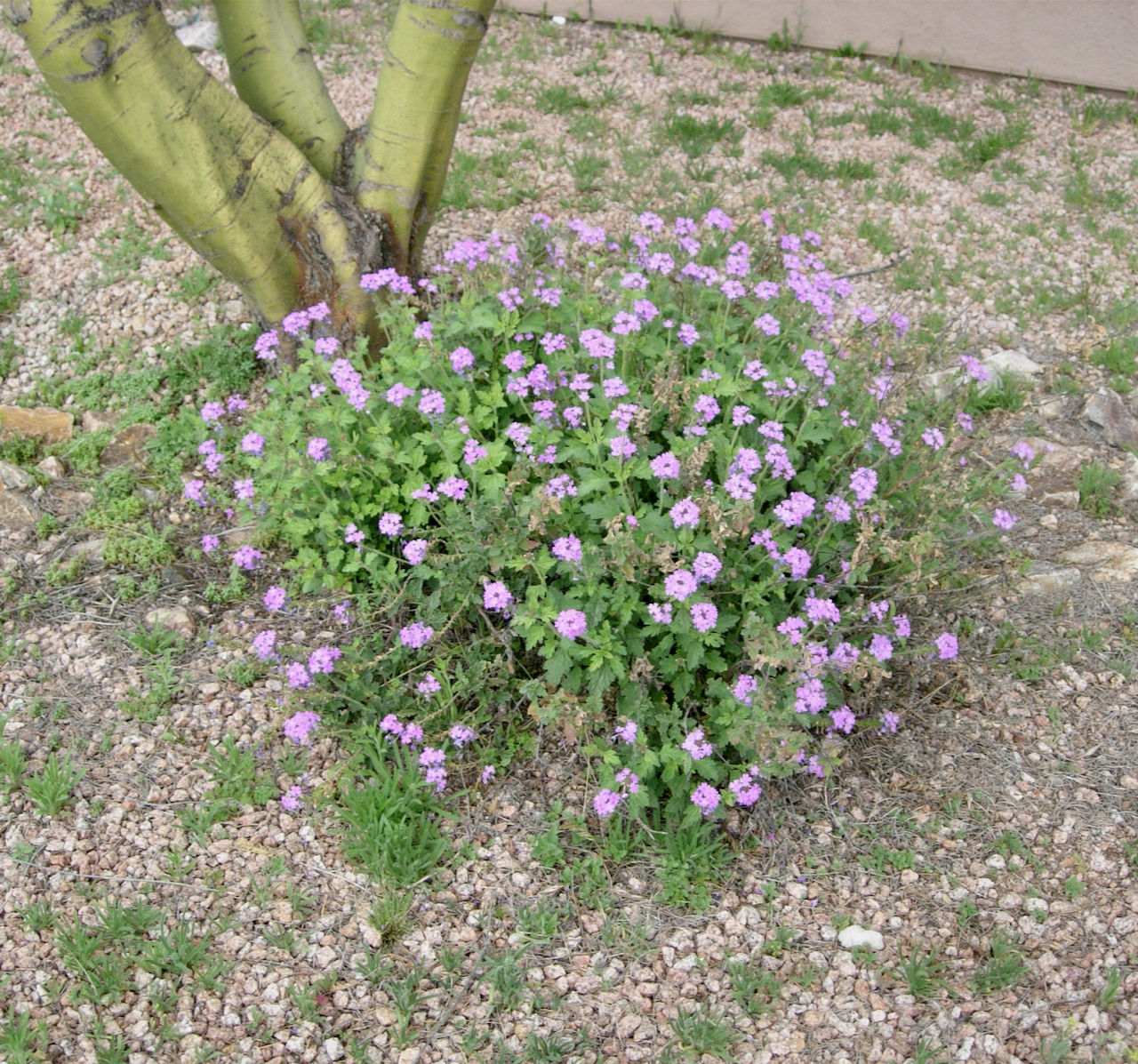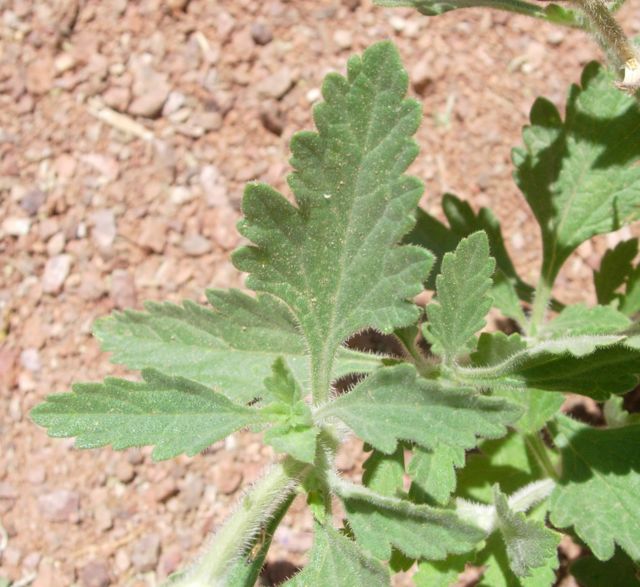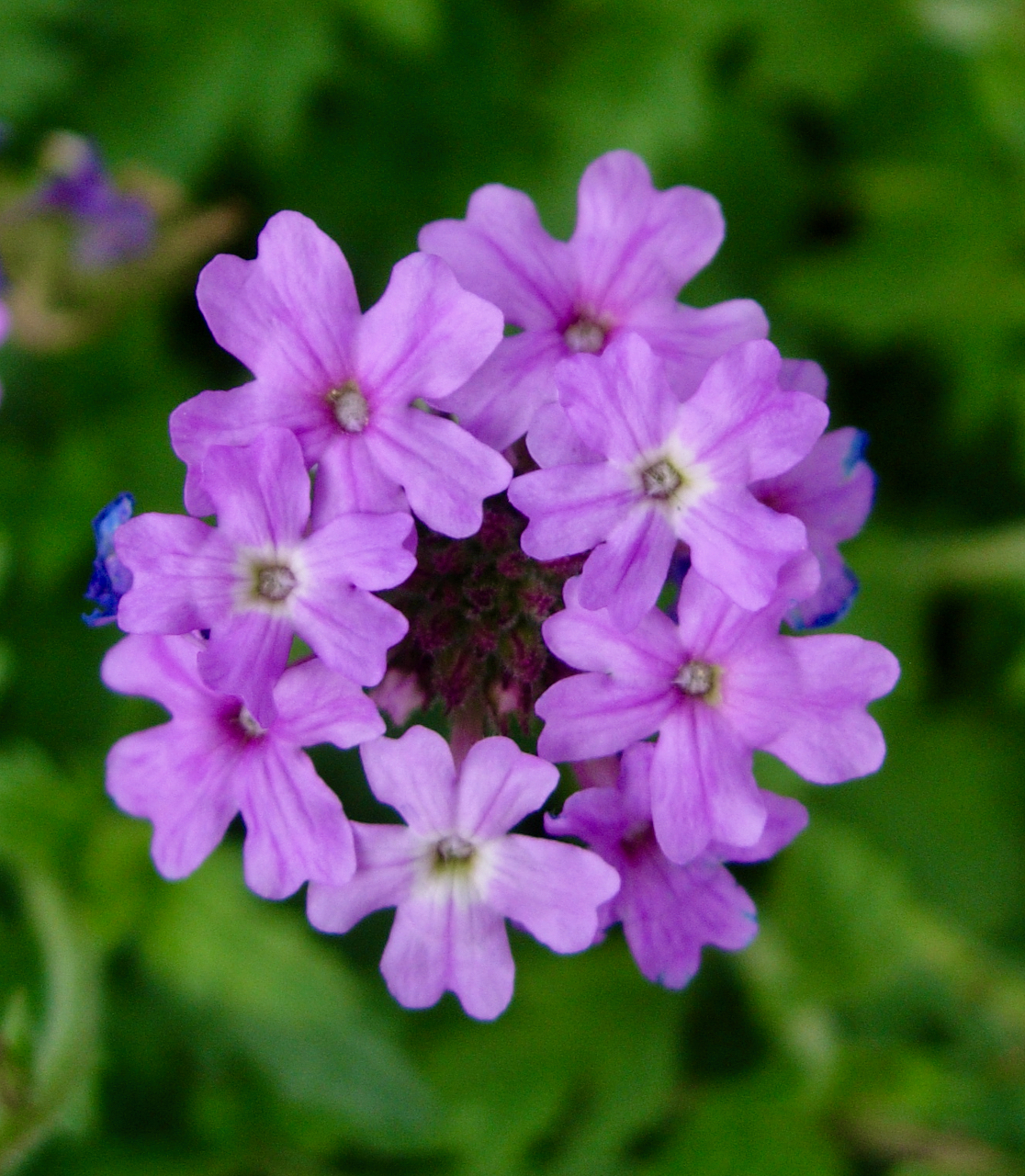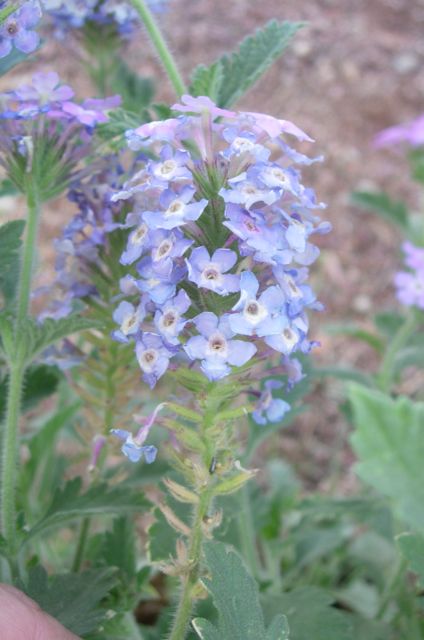Goodding Verbena
Glandularia gooddingii
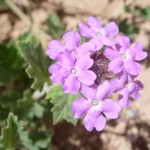
About the Plant
Goodding verbena is an Arizona native, a short-lived perennial with showy flowers. Grow it with other natives such as desert marigold and penstemon for a long display of spring color or use it to soften the hard edges of succulents.
Goodding verbena will bloom in the cool season, February-April, or even earlier. With irrigation, flowering can continue into summer and on to autumn. For best display, irrigate regularly while blooming. Allow to go to seed, as this will provide new seedlings to replace the older plants as they die.
Notes:
• This plant was formerly known as Verbena gooddingii.
• Goodding verbena can sometimes be confused with trailing lantana. Look at the shape of the leaves to help distinguish the two plants. See Weekly Plant below for more information. Lantana is woody and will grow much wider than Gooding verbena.
Wildlife value: Butterflies are strongly attracted to this plant. Mourning doves seem to always be pecking under the leaves.
More Information:
Weekly Plant on Goodding verbena
Horticultural information from ASU
Technical botanical description from SEINet
In books:
Native Plants for Southwestern Landscapes by Judy Mielke, page 154.
Perennials for the Southwest by Mary Irish, page 153.
ID Characteristics
This plant is in the Verbenaceae - the verbena family.
Goodding verbena grows to about 18 inches high and can spread 2 feet or more. The leaves are abundant though the plant may die back with drought or cold.
The leaves of Goodding verbena are opposite and have several lobes. They are 1-2 inches long and about 1 inch wide.
The flowers are about 0.5 inches wide, slightly fragrant, and vary in color from pale lavender to pink. There are five notched petals arranged just slightly asymmetrically - it reminds some people of a gingerbread man.
As the flower stalk grows, new flowers are formed at the tip. The older flowers below fade and small fruit forms. Eventually, the flower stalk may be several inches long, not particularly attractive, with flowers only at the tip. Cut the flower stalk off at the base for a more attractive look. New flower stalks may grow from the base of the upmost remaining leaves. However, if you want the plants to reseed, do not cut off the flower stalks too quickly, or at least not all of them. Allow at least a few to mature to give you new plants in future years.
